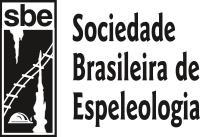Desde os anos de 1960, o Parque Estadual Turístico do Alto Ribeira – PETAR – recebe visitação em suas cavernas. Entretanto, a junção de fatores, como o ambiente delicado, a gestão fragilizada e a segurança vulnerável culminou em uma ação civil, que embargou a visitação nas cavernas turísticas do Parque, entre fevereiro e abril de 2008. Após estes 2 meses, a visitação foi retomada. Neste cenário, o presente trabalho apresenta os resultados de uma pesquisa sobre o fechamento das cavernas turísticas do PETAR, baseada na análise do conteúdo das opiniões dos stakeholders. Teve como objetivo principal a identificação dos impactos positivos e negativos causados à população de entorno, trazidos pelo embargo. Também investiga sobre mudanças no fluxo turístico e no perfil do visitante, bem como sobre possíveis melhorias no uso público do Parque, pós-2008. Os resultados demonstram que os impactos positivos mais relevantes foram um maior ordenamento do uso público, mais segurança para o visitante e mais efetividade na conservação ambiental. Os impactos negativos mais abrangentes foram os prejuízos financeiros, os quais atingiram, principalmente, a comunidade do bairro da Serra; e também o surgimento de uma reserva de mercado, que monopoliza o desenvolvimento turístico local, concentrando os ganhos na mão de poucas pessoas. O fluxo turístico voltou a crescer consideravelmente desde 2015 e houve mudanças no perfil do visitante. Concluiu-se que existem duas correntes de opiniões sobre a organização do uso público no PETAR após 2008. Uma parte dos stakeholders defende que está mais organizado e, por outro lado, outros defendem que está menos organizado. Isso se relaciona mais com a época em que o passeio foi realizado, baixa temporada ou feriados prolongados. A população de entorno, aparentemente, superou a interdição das cavernas e voltou a acreditar no turismo. A melhor alternativa para a população de entorno, atualmente, é investir em novos atrativos fora do parque, afim de desafogar o turismo nos feriados prolongados, também desvinculando o turismo na região, sobretudo, ao Parque. Ademais, conclui-se que a implantação dos Planos de Manejo Espeleológico podem estar entre as medidas que evitaria ou mitigaria grande parte dos impactos negativos sentidos desde 2008.
Resumo inglês: Since the 1960s, the Upper Ribeira State Tourist Park – PETAR – receives visitation in its caves. However, the combination of factors, such as the delicate environment, fragile management and vulnerable security culminated in a civil action, which embargoed the visitation in the tourist caves of the Park, between February and April 2008. After these 2 months, it was resumed. In this scenario, the present work presents the results of a research on the closure of the tourist caves of PETAR, based on the analysis of the content of the stakeholders’ opinions. Its main objective was to identify the positive and negative impacts caused to surrounding communities brought by the closure. It also investigates changes in tourist flow and visitor profile, as well as possible improvements in the park’s public use, after 2008.The results show that the most relevant positive impacts were greater public use planning, more safety for the visitor and more effectiveness in environmental conservation. The most comprehensive negative impacts were the financial losses, which affected, mainly, the community of the bairro da Serra; and also the emergence of a market reserve, which monopolizes local tourism development, concentrating the gains on the hand of few people. The tourist flow has grown considerably since 2015 and there have been changes in the visitor profile. It was concluded that there are two streams of views on the organization of public use in PETAR after 2008. Some of the stakeholders argued that is more organized and on the other hand, others argue that it is less organized. This relates more to the season when the tour was held, low season or extended holidays. The surrounding community apparently overcame the caves ban and came back to believing in tourism. The best alternative to the surrounding community is currently investing in new attractions outside the park, in order to vent the tourism in the long holidays also decoupling tourism in the region, especially the Park. In addition, it is concluded that the implementation of Speleological Management Plans may be among the measures that would avoid or mitigate much of the negative impacts felt since 2008.

